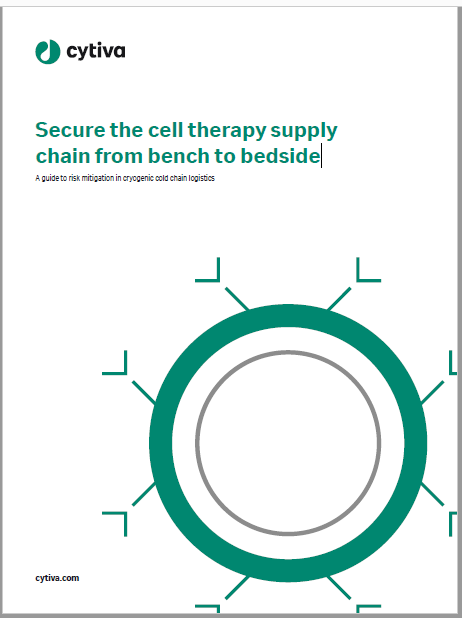

As innovative gene and cell therapies continue to make the transition from the laboratory to the clinic, they are bringing with them the promise of truly personalised medicine. The last few years have seen the regulatory approval of the first gene therapies that take a patient’s own immune cells and genetically engineer them to target cancer cells more effectively.
These chimeric antigen receptor T-cell (CAR-T) therapies now represent a rapidly growing field, with Novartis’s Kymriah, the first CAR-T therapy approved by the US Food and Drug Administration (FDA) in August 2017 for the treatment of a rare blood cancer, seen as the tip of the iceberg for this treatment class’ potential. Approval of Kite Pharma’s Yescarta, a CAR-T treatment for certain forms of non-Hodgkin lymphoma, followed just a few months later.
Transformative potential
“This has been utterly transformative in blood cancers,” Dr Stephan Grupp, director of cancer immunotherapy at the Children’s Hospital of Philadelphia, which collaborated with Novartis on Kymriah’s development, told the New York Times. “If it can start to work in solid tumours, it will be utterly transformative for the whole field.”
CAR-T, as well as other cell and gene therapies – such as Spark Therapeutics’ Luxturna, a gene therapy for inherited vision loss that was approved by the FDA in December – are offering the prospect of step changes in the treatment of genetic diseases and some of the deadliest forms of cancer.
“The cellular immunotherapies tend to be marketed for various types of cancer; these cause fewer side effects than traditional chemotherapies and as a result can be used in combination with other treatments in typically older patients, who can struggle to cope with drug-associated toxicity,” says PharmSource healthcare analyst Adam Bradbury. “Cellular immunotherapies will also be used in refractory cancers, which have become resistant to initial therapies.”
The regulatory landscape is also encouraging for gene and cell therapies; last year the FDA issued new guidelines to accelerate the assessment and approval of cell treatment and gene therapy, and the European Medicines Agency continues to focus on the area, publishing an action plan to foster the development of advanced treatments including gene therapy and somatic cell therapy.
“I believe gene therapy will become a mainstay in treating, and maybe curing, many of our most devastating and intractable illnesses,” said FDA commissioner Dr Scott Gottlieb after Luxturna’s approval.
The viral backlog
While the long-term transformative potential of gene and cell therapies is becoming increasingly clear, it is equally obvious that bringing the cutting-edge of personalised medicine to patients comes with no shortage of roadblocks. While traditional small molecule drugs and even complex biologics can be produced at large scales, cell and gene therapies require a new level of customisability and manufacturing expertise.
Although the cell and gene therapies that have so far been introduced to the market are indicated for rare diseases with small patient populations, and thus only require relatively small-scale manufacturing, the early successes of CAR-T therapies and the exploding pharma and biotech interest in cell and gene therapies stress the need for a rapid capacity expansion to support clinical research and commercial-scale production.
Viral vectors of various kinds – the most common being lentiviral and adenoviral vectors – are used in the production of many cell and gene therapies. These disabled viruses encase the genetic material to be introduced to the target cells in the patient; the harmless viral vectors essentially infect the relevant cells to deliver the therapy. Worryingly, there is already a significant backlog of viral vector availability for gene and cell therapy developers.
“As more related biologics have been approved and researched in recent years, the demand for viral vectors has increased,” says Bradbury. “Particularly following on from the clinical trial success of CAR-T cell therapies, more pharma and biotech companies are seeking to enter the market. The manufacturing process to produce viral vectors is complex, costly and highly regulated. There is a shortage of both related manufacturing facilities and appropriately qualified staff, which has meant that demand has outstripped supply and will continue to do so.”
As contract manufacturing organisations (CMOs) struggle to build capacity and expertise in the viral vector production that forms the basis for many gene and cell therapies, Bradbury notes that there is currently an average wait time of 16 months for CMOs to start new projects, even at the smaller clinical scale. Scaling up capacity is incredibly difficult and costly; the need for Good Manufacturing Practice (GMP) facilities to grow cells while ensuring vector sterility and purity means that the regulatory burden is high.
“The cost of constructing the viral vector manufacturing facilities is prohibitively expensive, in the range of hundreds of millions of dollars,” Bradbury says. “On the regulatory front, there is difficulty establishing all aspects of GMP at early phases of clinical trials. Virus manufacture can be considered as more problematic than that of mAbs [monoclonal antibodies] and requires cryopreservation at a far lower temperature than most biologics.”
Boosting capacity, cutting costs
Almost a year and a half is a long time to wait to kick off production for a clinical trial or research project, let alone commercial-scale manufacturing, and Bradbury says the backlog is likely to increase in the short term. While many large pharma firms will have the financial clout to build or acquire their own production facilities to support gene and cell therapy programmes, those that rely on external contractors will be hit hardest.
“Smaller and medium-sized companies will be affected most by a lack of CMOs involved with cell and gene therapy manufacture,” says Bradbury. “I expect both clinical and commercial manufacture to be affected; the demand is likely to drive up prices for CMO services, which in turn will affect institutions conducting clinical research that may not have the budget to run trials.”
With the capacity crunch in full effect, developers large and small have been scrambling to secure their viral supply chain. For the production of Kymriah, Novartis partnered with UK-based gene and cell therapy specialist Oxford BioMedica back in 2013, giving Novartis access to the company’s LentiVector delivery platform, as well as its facilities and expertise.
Smaller biotechs have been spreading their bets to help ensure a steady flow of viral vectors. bluebird bio has adopted this kitchen-sink strategy to fuel its ambitious pipeline of experimental gene therapies for genetic diseases and cancers, led by Lenti-D for cerebral adrenoleukodystrophy and LentiGlobin for blood disorder beta thalassaemia. On one hand, Bluebird has struck multi-year manufacturing agreements with Brammer Bio, MilliporeSigma and Belgium-based Novasep. Meanwhile, in late 2017, the company announced that it had spent $11.5m to acquire a facility of its own in Durham, North Carolina, which it will convert into a production site for lentiviral vector.
CMOs are also working to increase capacity, with Brammer Bio doubling its capacity in recent years, investing $50m last year alone. Shanghai-headquartered CMO WuXi AppTec opened a 150,000ft² cell and gene therapy manufacturing centre in Philadelphia, while Swiss biopharma giant Lonza is making a play to lead the space. In April, the company opened a 300,000ft² cell and gene therapy plant near Houston, Texas, the largest facility of its kind in the world. The plant will complement the company’s existing cell and gene therapy hubs in New Hampshire, the Netherlands and Singapore.
As well as increasing capacity, sustained investment in these facilities, and their underlying processes, will help address the manufacturing challenges that make these one-time treatments so expensive. Novartis’s Kymriah currently costs an eye-watering $475,000 per treatment, and as these therapies begin to target organs with larger surface areas, necessitating larger cell batches, costs at the current rate would rise to as much as $3m per patient, Oxford BioMedica chief executive John Dawson told the New York Times last year. As production processes mature and manufacturers start embracing automation, these costs will come down, making treatments affordable for health systems and commercially viable for developers.
“There is substantial scope to improve the manufacturing process,” Bradbury comments. “As a relatively novel treatment and one which is complex and costly to manufacture, there are significant issues to resolve to improve the commercial viability of a cell therapy. Quality control testing still has plenty of scope for optimisation. Cell therapy production must become automated, which should also increase manufacturing scale for commercial production. Viral vectors must also be more readily manufactured and available.”
Cell & Gene Therapy Coverage on Pharmaceutical Technology supported by Cytiva.
Editorial content is independently produced and follows the highest standards of journalistic integrity. Topic sponsors are not involved in the creation of editorial content.



